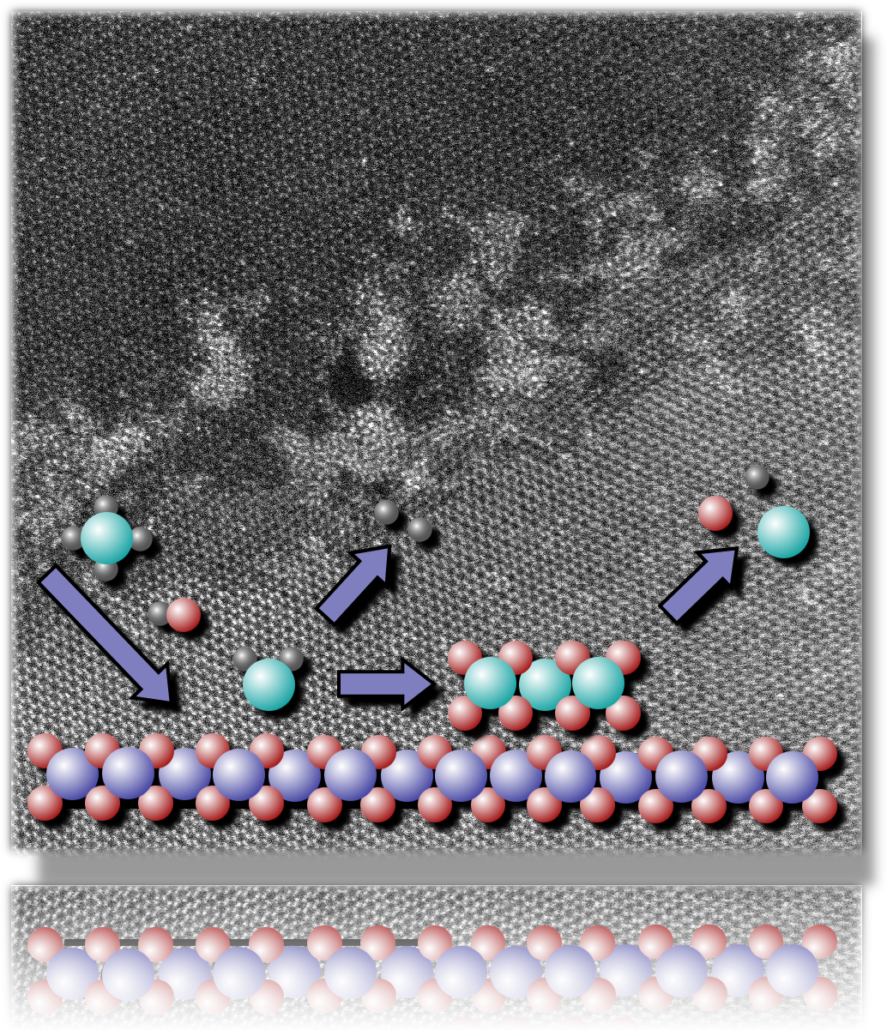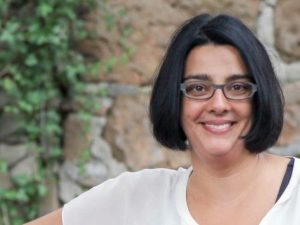Metal Organic Vapour Phase Deposition of Two-Dimensional Heterostructures
Summary
This project aims at realising well-defined interfaces in two-dimensional (2D) materials and heterostructures using metal organic chemical vapour deposition (MOCVD). It is important to use this technology for the synthesis, if these materials are to be implemented in future device concepts, as MOCVD allows for controlled growth and upscaling at the same time.
Various 2D model material systems are chosen according to the interest of the partner projects in this SFB: we synthesise gallium / indium sulphide / selenide / telluride structures for the groups using electron spectroscopy. Molybdenum / tungsten / tin disulphide / diselenide structures are grown for groups performing optical spectroscopy. Using our large experience with III-V and group-IV materials’ growth, we systematically vary the growth parameters, like temperature, VI/III ratios and reactor pressure in order to derive the incorporation and growth characteristics of the materials. With respect to metal organic precursors, we use conventional chemicals, but also work on developing precursors, which can be applied in atomic layer deposition schemes, in order to further control the 2D nature of the layers grown. Their decomposition is monitored in-situ by mass spectrometry. In collaboration with partner projects in the SFB a combination of (hard) X-ray photoelectron spectroscopy (XPS, HAXPES) and scanning tunnelling microscopy (STM) is applied to analyse the deposits on the substrate. Moreover, temperature-programmed mass spectrometry detects volatile side products. These studies help to understand the reaction kinetics/thermodynamics. The dependence of the growth characteristics on growth parameters, but also on the substrate structure (crystalline versus amorphous steps), is elaborated with the aim of controlling the growth of large two-dimensional films.
The layers and heterostructures are characterised using atomic force microscopy, X-ray scattering and energy-dispersive X-ray spectroscopy in this project and using transmission electron microscopy, Raman spectroscopy and different electron as well as optical spectroscopy techniques in the partner projects.
Project-related publications
- O. Maßmeyer, T. Hepp, R. Günkel, J. Glowatzki, W. Stolz, K. Volz
In situ analysis of Bi terminated GaAs (001) and Ga(As,Bi) surfaces during growth by MOVPE
Appl. Surf. Sci. 533, 147401 (2020). - O. Maßmeyer, S. Inacker, T. Hepp, J. Glowatzki, L. Nattermann, E. Sterzer, C. Ritter, C. von Hänisch, W. Stolz, K. Volz
Decomposition Mechanisms of Di-tert-butylaminoarsane (DTBAA)
Organometallics 38, 3181 (2019). - L. Nattermann, O. Maßmeyer, E. Sterzer, V. Derpmann, H.Y. Chung, W. Stolz, K. Volz
An experimental approach for real time mass spectrometric CVD gas phase investigations
Sci. Rep. 8, 319 (2018). - O. Maßmeyer, E. Sterzer, L. Nattermann, W. Stolz, K. Volz
Influence of UDMHy on GaAs (001) surface reconstruction before and during growth of Ga(NAs) by MOVPE
Appl. Surf. Sci. 458, 512 (2018).


Prof. Dr. Kerstin VOLZ
Thilo Hepp, Postdoc
Johannes Glowatzki, PhD-student
Robin Günkel, PhD-student
Former Contributors






